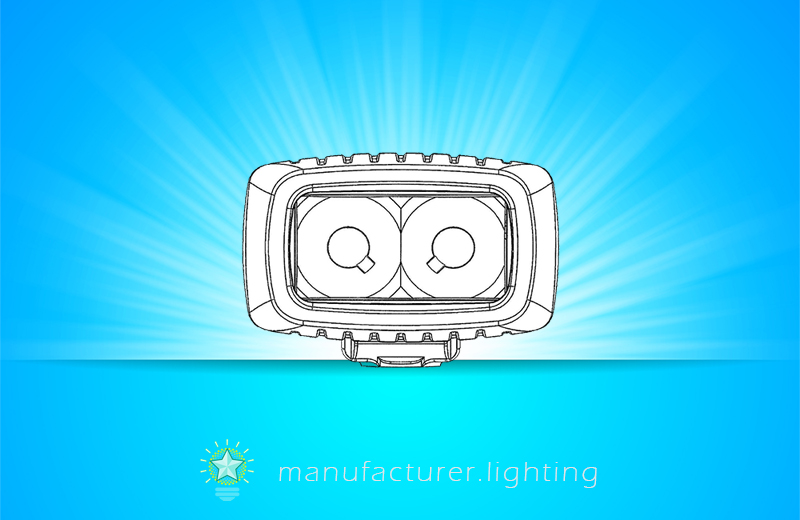
Off-road lights are vehicle mounted auxiliary driving lights commonly used where the driver of a vehicle requires supplemental illumination beyond ambient lighting and lighting provided by the vehicle. A typical automotive vehicle includes several light emitting elements that are adapted to provide exterior illumination and/or to improve thevisibility of the vehicle to others. These light producing elements include, for instance, headlights, taillights, daytime running lamps, and also off-road lights. An off-road vehicle in a location with no exterior lights may need more illumination than that provided by the vehicle's headlights. The safe operation of many off-road vehicles take advantage of the placement of one or more auxiliary lighting systems on one or more surfaces of the vehicle to illuminate the area ahead of the vehicle so it may stay on the road, trail or other path on which it is traversing. The auxiliary light may be employed in conjunction with vehicles, aircraft, watercraft, motorcycles, trailers and commercial equipment. The auxiliary light may also be used in a stationary location, such as in an architectural use. These driving lights are preferably mounted on the outside front of the vehicle. Alternatively these driving lights can be installed on a special mounting frame or on a load carrier, such as a roof rack on the roof of a vehicle. The protective housing comes with or is configured for a mounting system that enables the external mounted light to be secured to a base. A variety of mounting systems are presently on the market to removably mount offroad spotlights to a motor vehicle, these include but not limited to the roll bar, roll cage or other external components thereof. A mounted auxiliary light typically comes with one or more light sources in a protective housing. The light sources may be of various types, for example light-emitting diode (LED), high-intensity discharge (HID) or halogen.
